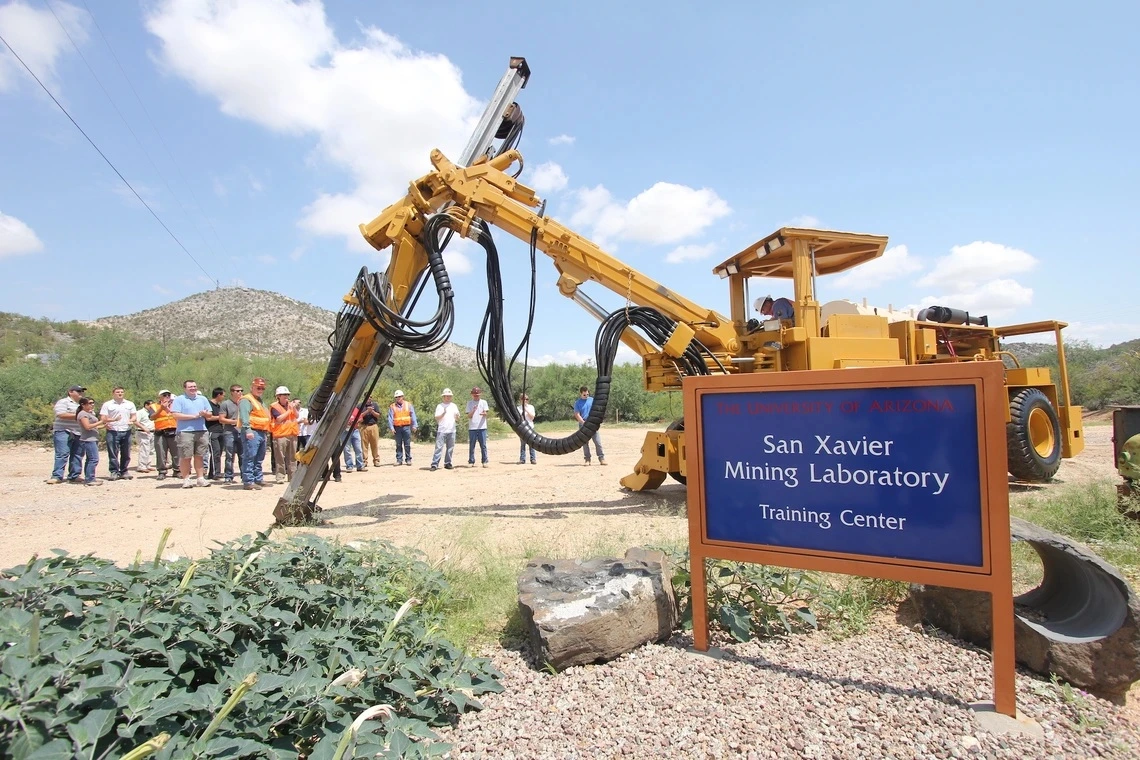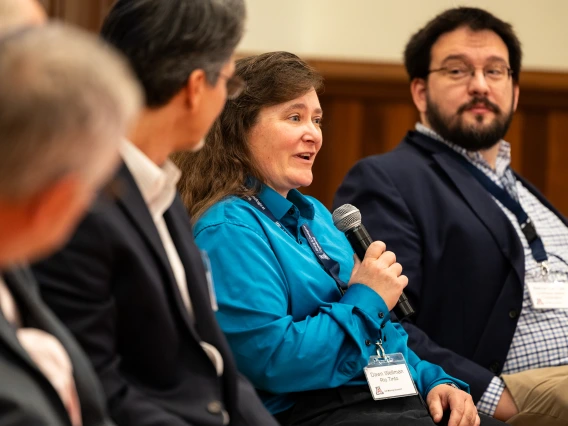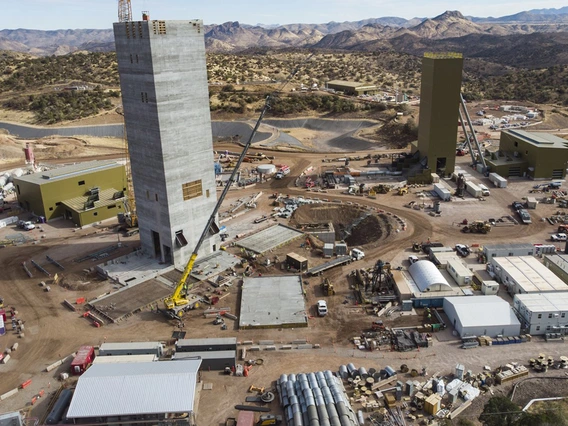Alumni couple's $1.5M gift strengthens U of A mining education when it matters most
The Snider family endowment bolsters workforce needs.

The Sniders' gift supports hands-on learning experiences for students, like the San Xavier Mining Laboratory, which is a one-of-a-kind, real-world training laboratory with a working vertical shaft.
Tim and Rhonda Snider, both University of Arizona alumni, have made a $1.5 million gift to the Department of Mining and Geological Engineering that will increase opportunities for students and spur faculty research.
The Sniders' gift creates the Timothy and Rhonda Snider Endowment Fund at a time when sustainable mining and a secure domestic supply chain are national imperatives. The U of A is strengthening its role as a catalyst for progress in the mining sector.
"This gift reflects a shared vision for the future of mining – one that demands technical excellence, workforce development, and a deep commitment to sustainability," said Tomás Díaz de la Rubia, senior vice president for research and partnerships. "Arizona is uniquely positioned to lead this effort, translating world-class expertise into impact for our state, our nation, and the world."
The gift is in addition to the Sniders' ongoing support of the Lowell Institute for Mineral Resources over the last 17 years, which has totaled $500,000. The Sniders decided the time was right to expand their contributions to the mining engineering program, which they consider the "best in the world."
Vision aligns with generosity
The Sniders attended the U of A but are not graduates. Tim Snider earned a bachelor's degree in chemistry and geology from Northern Arizona University and built a distinguished career in mining. A third-generation employee of Phelps Dodge Corp., he began his career as a laborer in the Copper Queen Mine in Bisbee, Arizona, and eventually became the company’s president and chief operating officer. He was also a founder and chairman of Cupric Canyon Capital, which developed the Khoemacau copper mine in Botswana.
Copper is essential to infrastructure and technologies like electric vehicles and renewable power generation that are critical to help reduce carbon emissions. But projected shortfalls in copper production in the coming decade could short-circuit those efforts. Goldman Sachs estimates the gap between copper supply and demand could reach 4 to 8 million metric tons annually by 2030. This amount is roughly equivalent to 15%-30% of current global production.
"The Sniders' generous gift will allow us to accelerate our bold plans in mining education and research," said David W. Hahn, the Craig M. Berge Dean of the College of Engineering, which houses the Department of Mining and Geological Engineering. "In addition, it comes at a moment when mining is at the forefront at the University of Arizona and meeting the expanding needs of our society is paramount."
Snider said his 50 years of experience in mining make those needs clear to him.
"I, along with many other people in the industry, know what's coming," he said. "We haven't been discovering enough copper deposits and building enough new copper mines to supply the demand that is coming."
Keeping the talent pipeline in the copper industry flowing is one factor in meeting near-term needs for the metal. One of the major themes at the inaugural U.S. Mining Summit hosted by MGE in April was the role that universities can play in advancing technology and strengthening recruitment efforts.
"Every time we talk to industry, they ask us about workforce," said the department's head, Kray Luxbacher, who holds the Gregory H. and Lisa S. Boyce Leadership Chair of Mining and Geological Engineering.
To address these looming issues, funds from the endowment will go toward three areas: student scholarships, with a focus on recruiting first-generation students; faculty support; and discretionary spending.
"Rhonda and I are very interested in helping first-generation kids who might not be able to pursue science or engineering education otherwise," Snider said.
Luxbacher pointed out that there are only 87 mining and engineering university faculty members nationwide, a number unchanged from 2011.
"This gift will be very impactful because we can retain our great faculty here at the University of Arizona, and they will have extra resources they can use for research and teaching methods they might not otherwise have the ability to explore."
The discretionary funds are also highly valuable, Luxbacher said, to support the university's San Xavier Underground Mining Laboratory, which provides a realistic underground environment for hands-on training and advanced research.
"It's a place where we end up needing discretionary spending, so it will be an enormous benefit," she said. "San Xavier is a really important laboratory for our students, and it allows us to provide novel experiential learning activities. We also have a vision to ramp up our engagement with industry there."
Snider is now a professional director serving on the board of Teck Resources Ltd. He previously served on several corporate and nonprofit boards. The Sniders' relationship with the U of A goes back many decades.
"This gift is critical in its support of mining research and tomorrow's U of A graduates who contribute to the industry in meaningful ways," said John-Paul Roczniak, president and CEO of the University of Arizona Foundation. "I'm particularly grateful for the Sniders’ decision to make an endowed gift, which ensures ongoing support for a program that is of vital importance to the state of Arizona."



